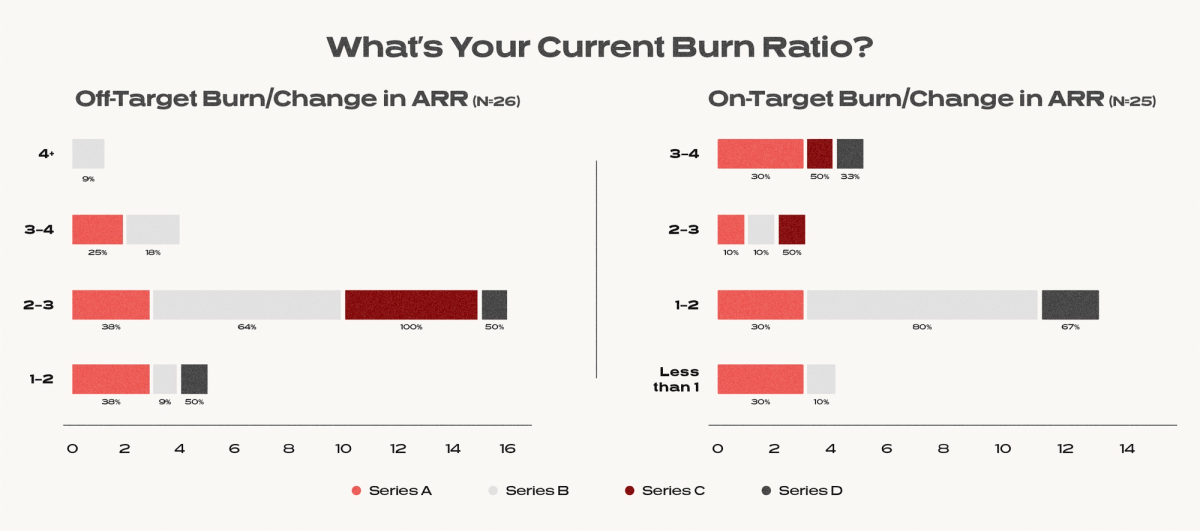Ⓒ 2023 Kyligence, Inc. All rights reserved.

Understanding Burn Multiple
The Burn Multiple – first introduced by David Sacks at Craft Ventures is a capital efficiency metric that measures how much capital is being consumed to grow each dollar of ARR
Burn multiple is a crucial metric used by entrepreneurs, investors, and financial analysts to assess the financial sustainability of a company. It provides insights into how long a company's current cash reserves can support its operating expenses before it runs out of funds.
The burn multiple is calculated by dividing the total cash burn (operating expenses) by the monthly or annual revenue growth rate. This ratio helps determine if a company is spending its funds at a sustainable rate or if adjustments need to be made.
Several factors influence burn multiple calculations, including revenue growth rate and operating expenses. By understanding these factors, stakeholders can gain valuable insights into a company's financial health and make informed decisions about investments or business strategies.
Factors Influencing Burn Multiple Calculations
Revenue Growth Rate
The revenue growth rate plays a significant role in determining the burn multiple of a company. A higher growth rate indicates that the company's revenue is increasing at a faster pace, which can positively impact the burn multiple. When the revenue growth rate is high, it means that the company is generating more income to cover its operating expenses and potentially achieve profitability sooner.
To calculate the burn multiple based on different growth rates, you need to divide the total cash burn by the monthly or annual revenue growth rate. By adjusting the growth rate, you can analyze various scenarios and understand how changes in revenue affect the burn multiple. This analysis helps entrepreneurs, investors, and financial analysts evaluate a company's financial sustainability under different market conditions.
Operating Expenses
Operating expenses also have a significant impact on the burn multiple calculation. These expenses include costs related to salaries, rent, marketing, research and development, and other day-to-day business operations. The higher the operating expenses, the faster a company burns through its cash reserves.
Analyzing the relationship between operating expenses and burn multiple provides insights into how efficiently a company manages its resources. If operating expenses are too high compared to revenue growth, it may indicate potential financial risks or inefficiencies in cost management. On the other hand, lower operating expenses relative to revenue growth can contribute to a healthier burn multiple and demonstrate effective financial management.
By understanding how revenue growth rate and operating expenses influence burn multiple calculations, stakeholders can gain valuable insights into a company's financial health and make informed decisions about investment opportunities or strategic adjustments.
Methods to Calculate Burn Multiple
Simple Burn Multiple
The simple burn multiple is a straightforward method used to calculate the burn rate of a company. It involves dividing the total cash burn (operating expenses) by the monthly or annual revenue growth rate. Here's a step-by-step guide on how to calculate the simple burn multiple:
Determine the total cash burn: Add up all the operating expenses incurred by the company over a specific period, such as a month or year.
Calculate the revenue growth rate: Determine the percentage increase in revenue over the same period.
Divide total cash burn by revenue growth rate: Divide the total cash burn by the revenue growth rate to obtain the simple burn multiple.
Burn Multiple Formula
Burn Multiple = Net Burn / Net New Annual Recurring Revenue (ARR)
Where:
Net Burn = Cash Revenue – Cash Operating Expenses
Net New ARR = New ARR + Expansion ARR – Churned ARR
Interpreting the results of the simple burn multiple is crucial for assessing a company's financial health. A burn multiple greater than 1 indicates that a company is spending its funds at a faster rate than it is generating revenue, which may raise concerns about sustainability. Conversely, a burn multiple less than 1 suggests that a company's revenue growth is outpacing its spending, indicating better financial stability.
Modified Burn Multiple
The modified burn multiple takes into account adjustments that can affect an accurate assessment of a company's financial health. These adjustments may include non-recurring expenses or extraordinary events that impact operating expenses or revenue growth rates.
Understanding these adjustments helps provide a more comprehensive evaluation of financial sustainability compared to the simple burn multiple calculation. By comparing both metrics, stakeholders can gain deeper insights into how different factors influence a company's ability to manage its resources effectively and make informed decisions based on more accurate data.
Interpreting Burn Multiple Results
Benchmarking
Benchmarking the burn multiple against industry standards is a valuable practice for evaluating a company's financial health. By comparing the burn multiple to similar companies in the industry, entrepreneurs, investors, and financial analysts can gain insights into how well a company is managing its resources.
Using industry benchmarks helps identify outliers and potential areas for improvement. If a company's burn multiple is significantly higher than the industry average, it may indicate excessive spending or inefficiencies in cost management. Conversely, a lower burn multiple compared to competitors could suggest effective financial management and better sustainability.
According to a survey conducted by Redpoint Ventures, benchmarking burn multiples against industry standards has emerged as a valuable practice for assessing a company's financial health. The survey targeted over 50 venture-backed startups that have raised between Series A and Series D funding rounds. The results revealed that companies with burn multiples within the range of 1-2x were considered best-in-class, indicating efficient resource management.
On the other hand, companies with burn multiples of 3x or higher were deemed inefficient, potentially signaling excessive spending or inefficiencies in cost management. Interestingly, the survey also identified a distinct cohort of companies that were "on-target" in terms of revenue progression but had burn multiples of 3-4x. This raised concerns about the sustainability of their growth strategies, suggesting either a lack of true product-market fit or intense competition in a market driven by the availability of cheap capital. These findings highlight the importance of benchmarking burn multiples against industry standards to gain insights into a company's financial performance and identify areas for improvement.

Analyzing these benchmarks allows stakeholders to set realistic goals and make informed decisions about resource allocation and budget planning. It also provides an opportunity to learn from best practices within the industry and implement strategies that can improve financial performance.
Investor Perspective
Investors analyze the burn multiple as part of their due diligence process when considering investment opportunities. The burn multiple provides insights into a company's ability to sustain its operations until it achieves profitability or secures additional funding.
Factors influencing investment decisions based on the burn multiple include risk tolerance, growth potential, and market conditions. Investors typically prefer companies with lower burn multiples as they indicate better financial stability and reduced risk of running out of funds before achieving profitability.
However, it's important to note that different industries may have varying expectations for burn multiples due to variations in business models and growth trajectories. Therefore, investors consider the specific context of each industry when interpreting burn multiples.
By understanding how investors analyze the burn multiple, entrepreneurs can tailor their financial strategies to attract potential investors and demonstrate their commitment to sustainable growth.
Key Takeaways
Burn multiple is a valuable metric that provides insights into a company's financial sustainability.
Calculating the burn multiple involves considering the revenue growth rate and operating expenses.
Interpreting the burn multiple helps entrepreneurs, investors, and financial analysts make informed decisions about resource allocation, budget planning, and investment opportunities.
Understanding the burn multiple allows stakeholders to assess a company's ability to manage its resources effectively and sustain its operations. By analyzing factors such as revenue growth rate and operating expenses, stakeholders can gain valuable insights into a company's financial health and make informed decisions based on accurate data. The burn multiple serves as an essential tool for evaluating financial sustainability and guiding strategic decision-making in various industries.
